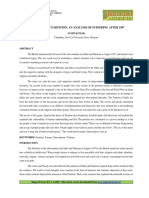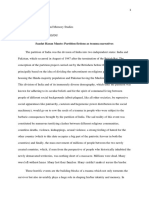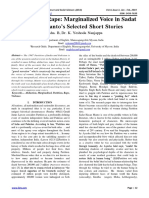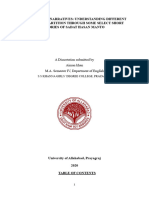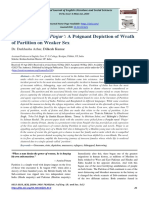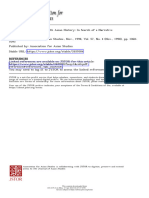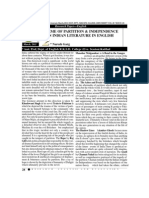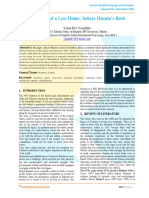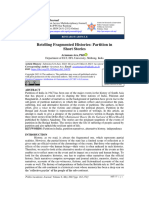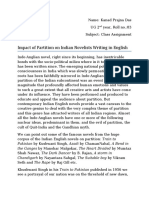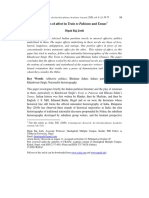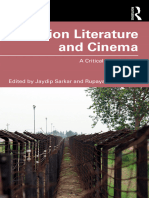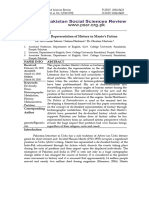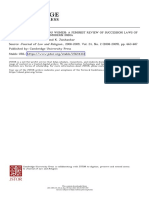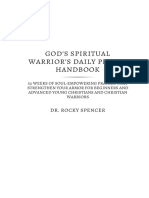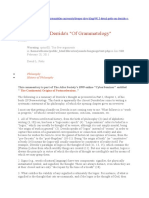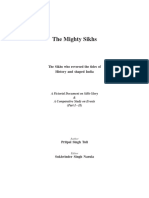0% found this document useful (0 votes)
28 views6 pagesSynopsis - Partition
The document outlines a Ph.D. research proposal examining the trauma of the Partition of India as reflected in selected Indian English novels. It aims to analyze the theme of partition, its social and political impacts, and conduct a comparative study of works by authors such as Attia Hosain, Manohar Malgonkar, and Bapsi Sidhwa. The research will utilize descriptive methodology and original texts as primary sources to explore the enduring effects of partition on the subcontinent's psyche.
Uploaded by
littleprincess7877Copyright
© © All Rights Reserved
We take content rights seriously. If you suspect this is your content, claim it here.
Available Formats
Download as PDF, TXT or read online on Scribd
0% found this document useful (0 votes)
28 views6 pagesSynopsis - Partition
The document outlines a Ph.D. research proposal examining the trauma of the Partition of India as reflected in selected Indian English novels. It aims to analyze the theme of partition, its social and political impacts, and conduct a comparative study of works by authors such as Attia Hosain, Manohar Malgonkar, and Bapsi Sidhwa. The research will utilize descriptive methodology and original texts as primary sources to explore the enduring effects of partition on the subcontinent's psyche.
Uploaded by
littleprincess7877Copyright
© © All Rights Reserved
We take content rights seriously. If you suspect this is your content, claim it here.
Available Formats
Download as PDF, TXT or read online on Scribd
/ 6



